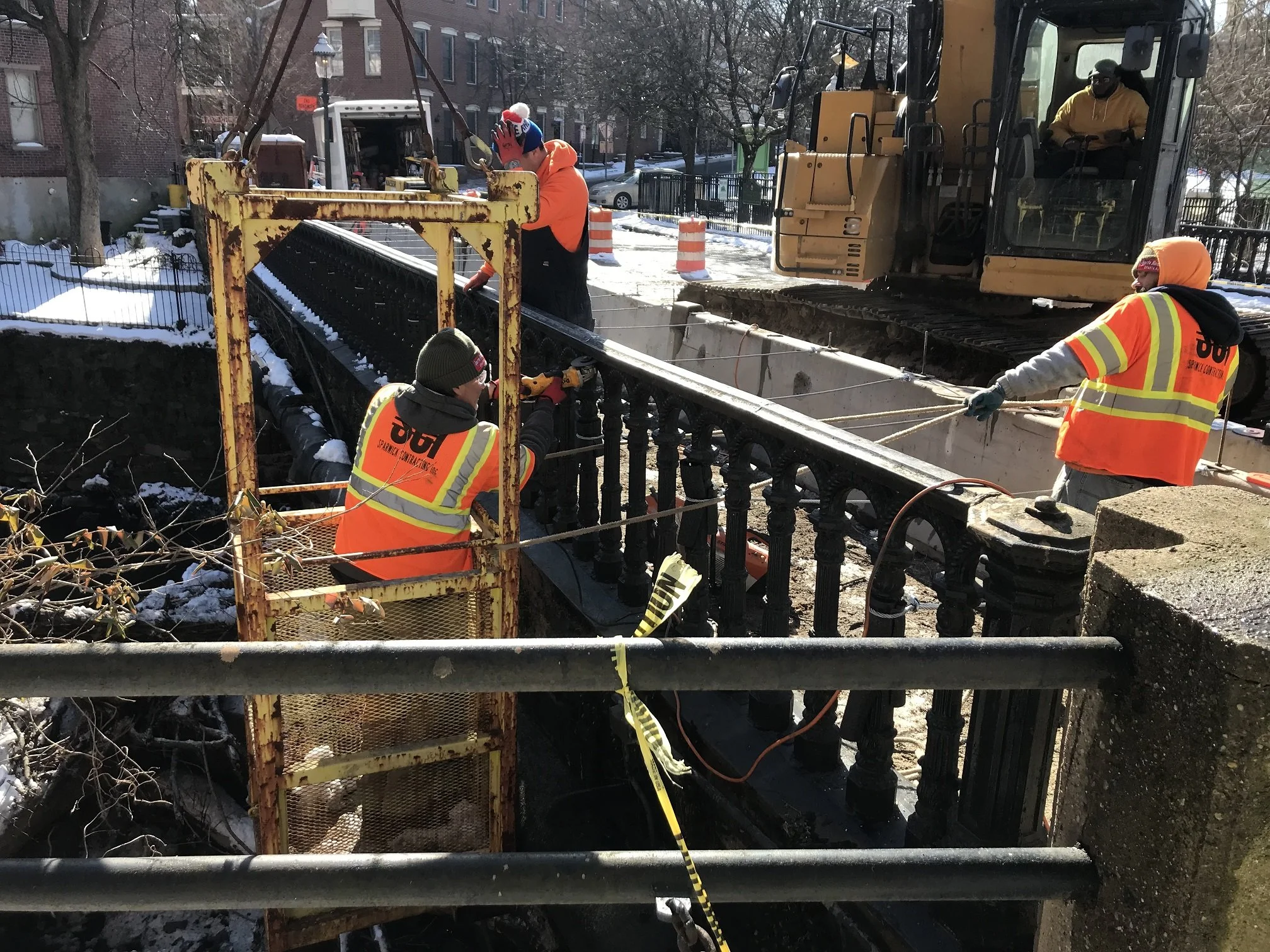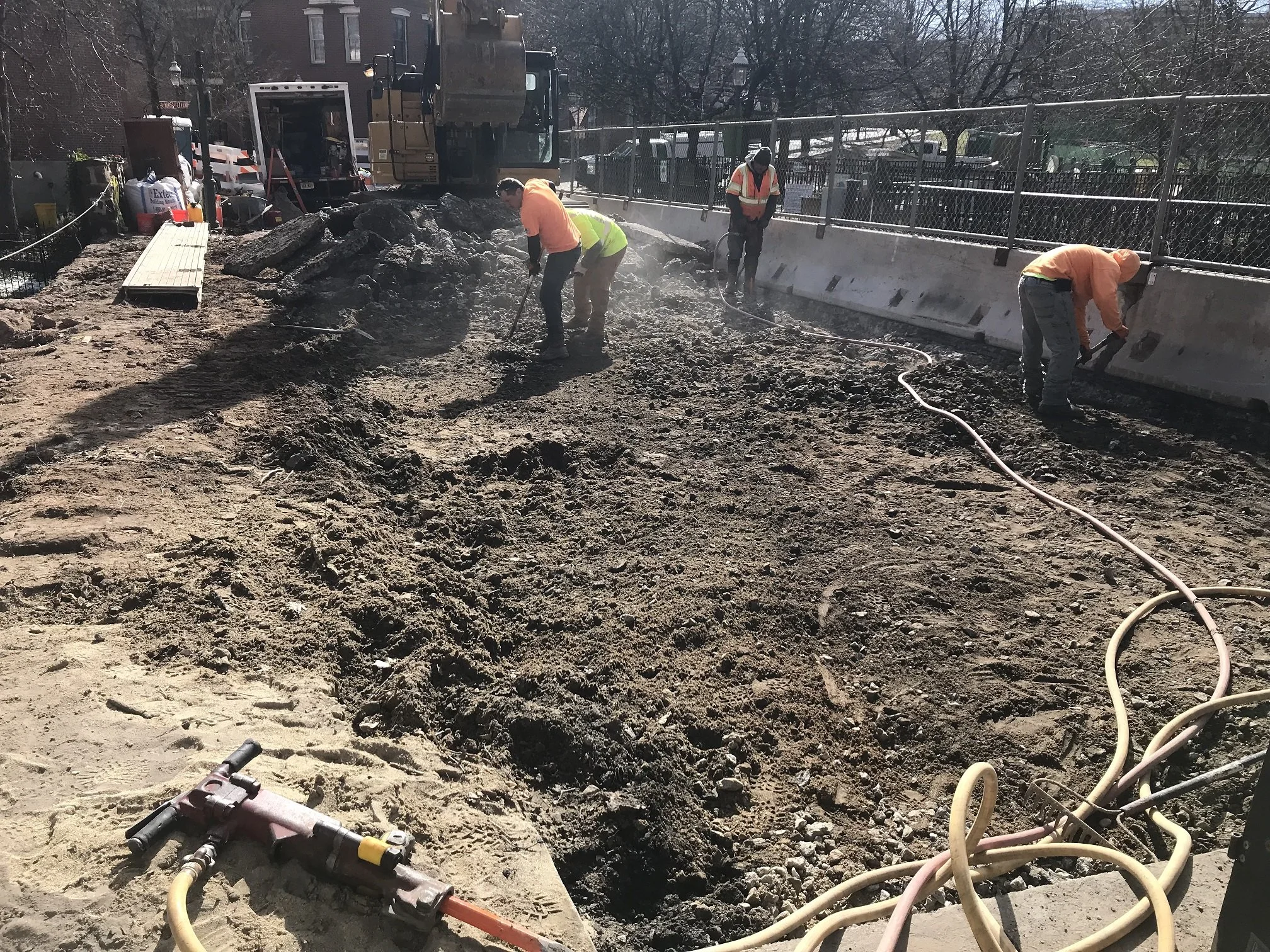Historic bridges provide both particularly interesting opportunities and challenges for historic preservation. The rapid development of bridge technology throughout American history has yielded a variety of beautiful bridge types, from stone arches to iron trusses. When it comes time to repair these resources, however, project engineers and consultants are often faced with varying forms of the following question: how much of the bridge’s historic composition can be preserved while also meeting modern safety standards and completing a cost-effective, lasting repair?
Between 2021 and 2025, Hunter Research provided cultural resource consulting services for the rehabilitation of Mercer County Bridge #140.4 carrying Montgomery Street over the Assunpink Creek in the City of Trenton, New Jersey. The Montgomery Street Bridge is a two-span stone arch bridge erected in 1873 to a design prepared by Trenton architect Henry E. Finch. The project addressed moderate cracking and missing stones in the arch barrels, defects in the spandrel walls, an abandoned water main penetrating the arches and scour undermining the abutments and pier. Engineers identified the bridge’s rare decorative cast-iron railings as substandard and a safety concern, but the County, local residents and preservationists expressed a strong desire to retain them. Due to the bridge’s listed status in the Mill Hill Historic District, the project was subject to review by the New Jersey Historic Preservation Office (NJHPO) under the New Jersey Register of Historic Places Act.
Hunter Research worked closely with the Mercer County Engineering Division and consultant engineer, Traffic Planning and Design, Inc., to develop a rehabilitation alternative that was fully compliant with the Secretary of the Interior Standards for the Treatment of Historic Properties. Rehabilitation of the stone arch barrels and spandrels made use of historic mortar analysis and incorporated matching stone masonry from a Pennsylvania quarry to fill voids and cracks. Sparwick Contracting, Inc. removed the unsightly utility pipes and conduits, relocated them into the sidewalk, and constructed a floating deck distribution slab. The cast-iron railings offered a particular challenge since they had been repaired with welds, a treatment likely applied in the 1950s in an abortive attempt to make the rails rigid. Sparwick carefully disassembled the railings, cutting them at the welded joints, and then sent the pieces to the shops of Susan R. Bauer, Inc. There, skilled historic metal fabricators cleaned the hollow rails and balusters, removed layer upon layer of paint, brazed and mended cracks and repainted the railings to show off the beautiful cast-iron workmanship. The installation of a low “Washington DC Historic Bridge Rail” along the slate curb line satisfied safety requirements and protected the historic railings after Sparwick reinstalled them. Hunter Research provided expertise in stone and iron conservation and coordinated with NJHPO staff, who issued a rare “no encroachment” finding for a state-funded bridge project.
The Montgomery Street Bridge project has so far won awards for its engineering excellence, historic preservation and community involvement from the American Council of Engineering Companies, the National Society of Professional Engineers, the New Jersey Society of Professional Engineers, the American Society of Highway Engineers and the New Jersey Alliance for Action (see project website here).








